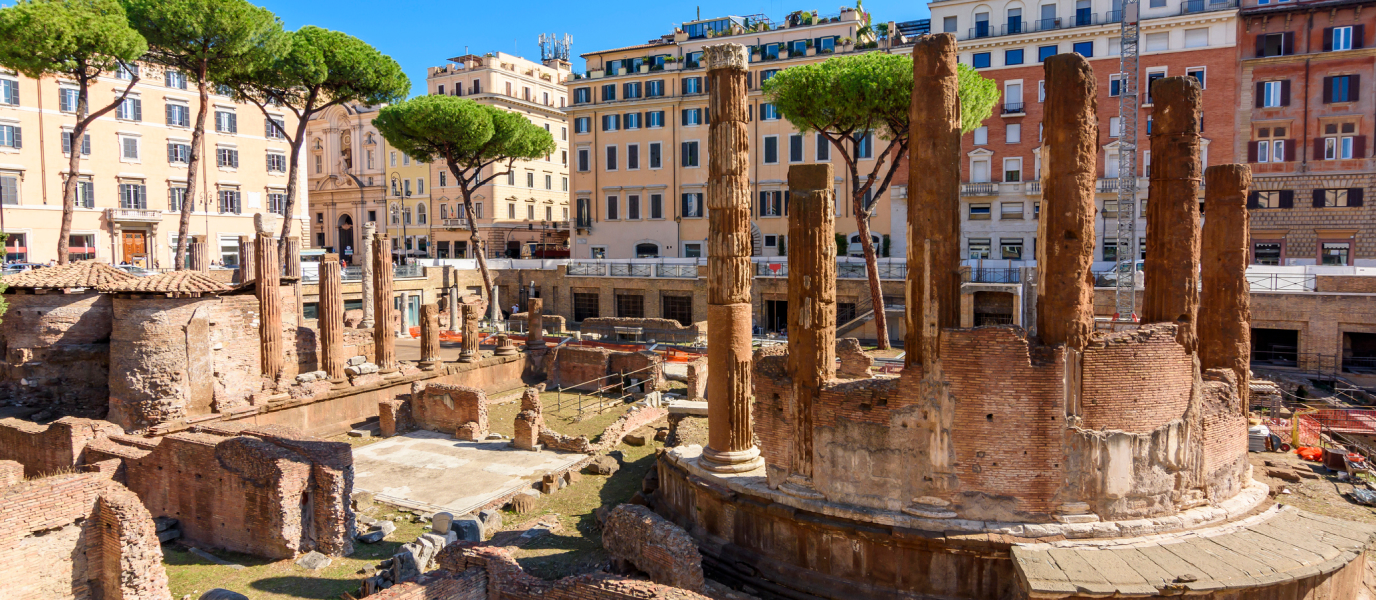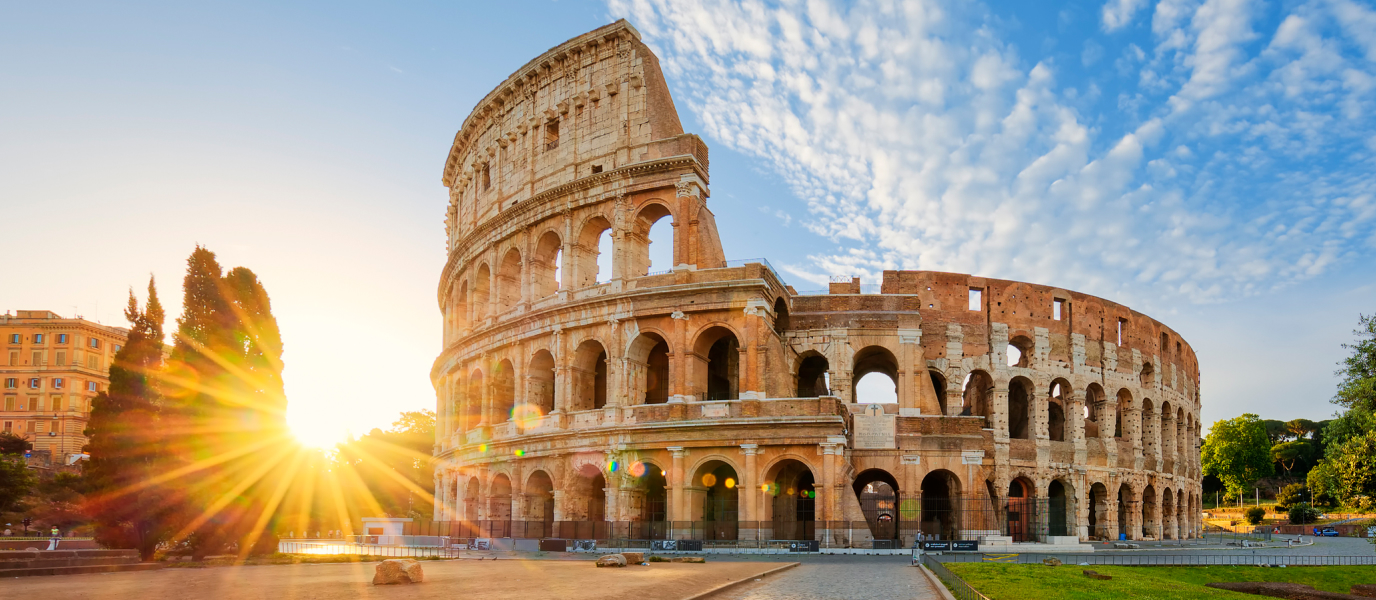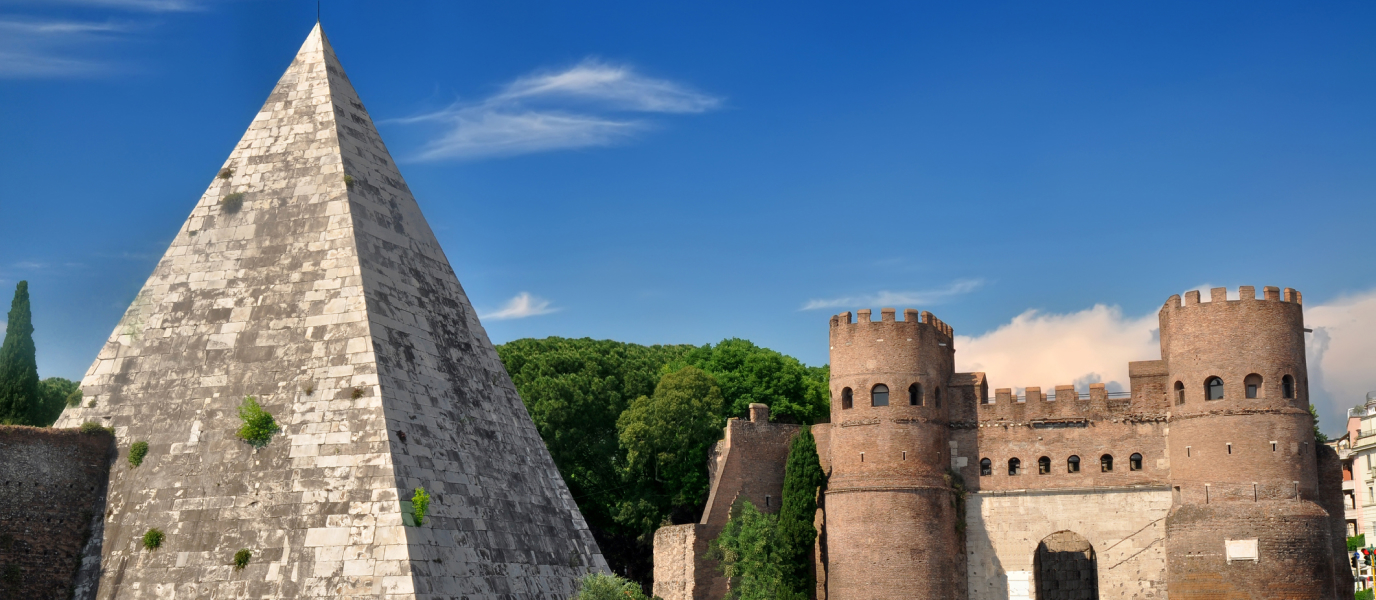Many visitors to Rome walk through Largo di Torre Argentina with no idea of its tragic history. The square is in the heart of the Italian capital in the ancient Campus Martius and has a huge footfall from tourists on their way to the Pantheon, Piazza Navona and Campo de’Fiori. The ruins in Largo di Torre Argentina rise up like an apparition amidst their modern city surroundings. You’ll be sharing the scene not only with other tourists but with a thriving stray cat population, and a now-famous Cat Sanctuary in the square provides a home for many of them. However, beyond its fascinating felines, the square has an important place in Rome’s historical heritage. Here you’ll find the remains of four temples and the Theatre and Curia of Pompey, where Julius Caesar was assassinated. The dramatic death of the general in 44 BC by a group of co-conspirators is a powerful example of treachery and power struggles.
The sacred square
Rome has a substantial historical heritage filled with fascinating discoveries and tales from the past. The Area Sacra or Sacred Area of Largo di Torre Argentina has the remains of four of the oldest temples in the capital. They were discovered during city remodelling works in the 1920s and date back to the Republican era, when they were built to commemorate triumphant victories over other realms.
When they were first discovered, the temples were named A, B, C and D because little was known about exactly when – and in whose honour – they were constructed. We now know that temple A was built in the year 241 BC in honour of Juturna, a goddess of fountains. Temple B was raised in 101 BC for the goddess Fortuna, and the large statue discovered inside the temple is now housed in the Capitoline Museums. Temple C is the oldest of the four and was raised for Feronia, a goddess of fertility who also protected forests and the harvests. Historians believe that temple D, the largest, was dedicated to the Lares Permarini, protectors of sailors. If you can, visit the Area Sacra by night when the golden lighting on the ruins creates a really special atmosphere.
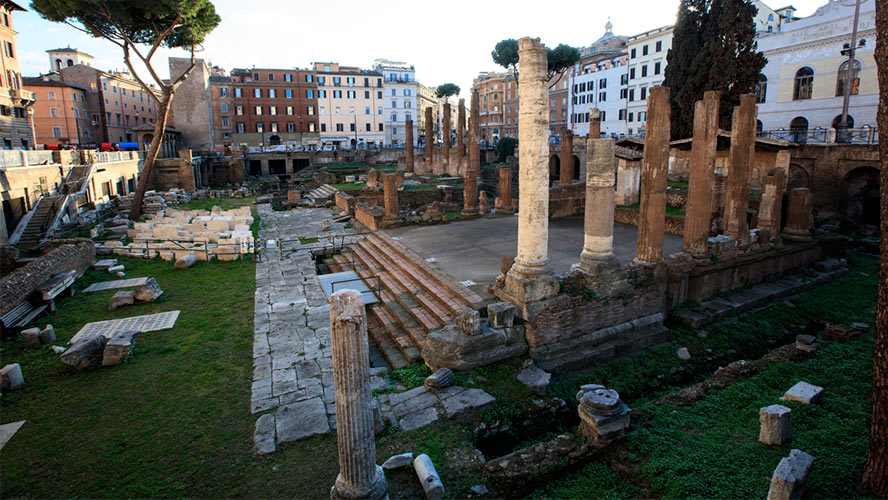
Theatre of Pompey and Curia
The Theatre of Pompey was built in the Republican era and is the oldest theatre in Rome. It was named after Pompey the Great, the Roman military and political leader who commissioned it around the year 55 BC. This large marble construction was inspired by the theatres of Greece and was in active use until the 5th century AD. It was the venue for public meetings and also had a temple to Venus Victrix. The portico was decorated with beautiful fountains, gardens and statues.
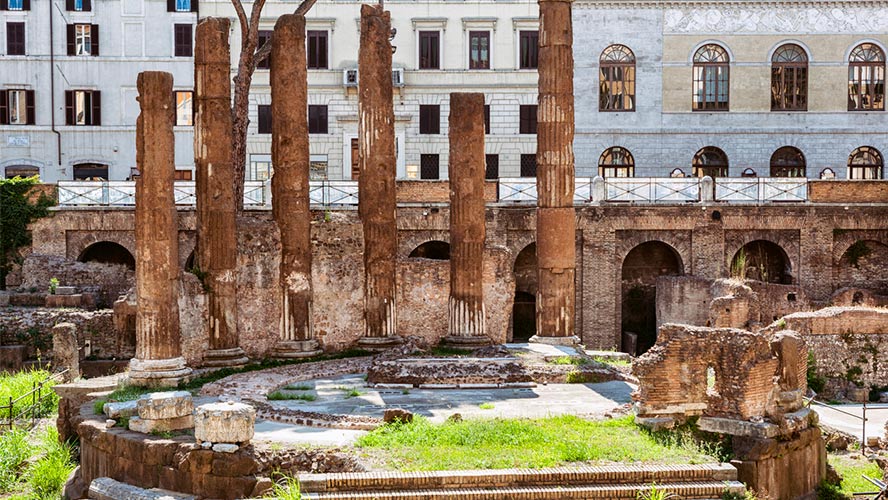
At the opposite end to the theatre was the Curia. This was one of the places in Rome were the Senate would meet and it’s particularly famous for being the place where Julius Caesar was assassinated.
Death of Julius Caesar
Surviving texts from Ancient Rome have revealed that Julius Caesar was assassinated in the Curia of Pompey on March 15th in the year 44 BC. However, the first real evidence of the event wasn’t discovered until 2012 when a group of Spanish researchers from the Spanish National Research Council (CSIC) unearthed a rectangular concrete structure with four walls. It was built years after the general’s death by order of Augustus, his adoptive son and successor, allegedly to mark the place of Caesar’s death.
Julius Caesar’s demise has been recreated on numerous occasions on the stage, on film, in literature and in art. He had a notable life as a military and political leader, orator and prose writer and achieved a great victory for Rome in the Gallic Wars. Caesar subsequently defeated Pompey in the Great Roman Civil War, weakened the structures that held up the Republic and secured absolute power and control for himself.
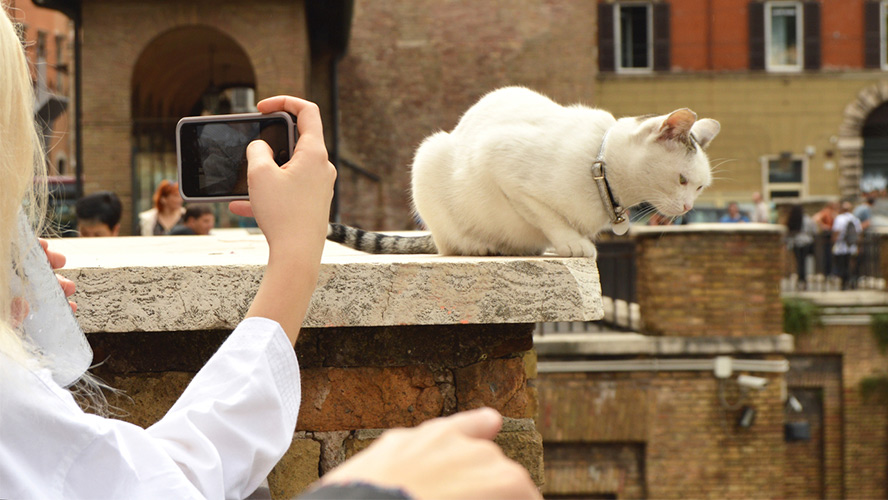
After pardoning many of the senators who supported his enemies during the war, Caesar offered them political positions in a move that would ultimately fail to prevent a plot against him by those who considered him a tyrant. Julius Caesar was seated, presiding over the Senate, when he was stabbed. Among the men involved was Brutus, son of Servilia (Caesar’s lover), hence the fictional phrase Et tu, Brute? that Shakespeare wove into his tragedy about Caesar’s death.
Cat Sanctuary
Visitors to Largo Argentina are captivated by the stray cats that live around the archaeological ruins, posing for photos and protected by a city that has always loved and revered them. They were fed for a long time by the female catlovers called gattare though there’s now an animal protection organisation funded by private donations.




































































